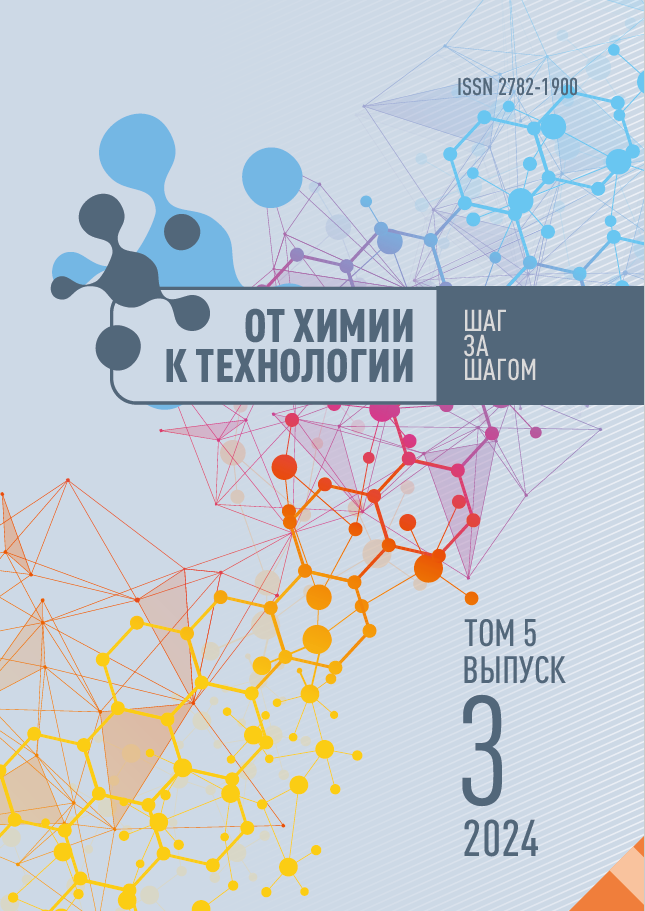Ivanovo, Ivanovo, Russian Federation
Ivanovo, Ivanovo, Russian Federation
Ivanovo, Ivanovo, Russian Federation
UDC 553.611.6
UDC 533.583.2
UDC 543.544
Antibiotics increased industrial production is the reason of their occurrence in wastewater, soils, groundwater, and drinking water. In this regard, treating the environment for pharmaceuticals is one of the urgent environmental challenges. Synthesis of adsorbents using different types of raw materials by the methods of mechanochemical activation makes it possible to significantly increase their sorption capacity due to the accumulation of various kinds of defects in the crystal structure of the adsorbent. We obtained the bentonite-carbon composite using roller-ring vibratory mill with coal-bentonite ratio of 30 : 70 and 50 : 50. However, the nature of the interaction between carbon and bentonite correlates with changes of surface area and porosity. The porous structure parameters of the samples show the mechanochemical activation of the mixture involves their components interactions. The authors studied the structural and chemical changes during the modification of bentonite with activated carbon by analysing the vibrational spectra of carbon, initial, and modified aluminosilicate samples. According to infrared spectroscopy of adsorbents, absorption bands characteristic of Si-O-C bond vibrations occurred. The paper investigates the sorption capacity of mechanochemically modified natural clay mineral Dash-Salakhli bentonite towards tetracycline hydrochloride. Research investigates the kinetics of the process and rapid sorption of tetracycline. The paper provides possible mechanisms of chemisorption due to donor-acceptor interaction and ion-exchange processes.
mechanochemical activation, sorption, bentonite, activated carbon, tetracycline hydrochloride, mechanism
1. Bergaya F., Theng B.K.G. and Lagaly G. Handbook of Clay Science // Elsevier Ltd. 2006. Vol. 1. P. 1224.
2. Gil A., Korili S.A. and Vicente M.A. // Catal. Rev. Sci. Eng. 2008. Vol. 50. № 2. P. 153.
3. Khamroev J.Kh., Fayzullaev N.I., Khaidarov G. Sh., Temirov F.N., Jalilov M.Kh. Texture and Sorption Characteristics of Bentonite-Based Sorbents // Ann. Romanian Soc. Cell Biol. 2021. Vol. 25, Issue 4. P. 828 – 849.
4. Kuznetsov N.B. Carbon sorbents synthesis and application // Soros Educational Journal. 1999. No. 12. P. 29-34 (in Russian).
5. Mashkovsky D.A. Medicines. M. : New Wave [Novaya volna], 2005. 1206 p. (in Russian).
6. Schwartz T., Kohnen W., Jansen B., Obst U. Detection of antibiotic-resistant bacteria and their resistance genes in wastewater, surface water, and drinking water biofilms // FEMS Microbiol. Ecol. 2003. Vol. 43. P. 325-335. DOI:https://doi.org/10.1111/j.1574-6941.2003.tb01073.x.
7. Yang J-F, Ying G-G, Zhao J-L, Tao R. et al. Spatial and seasonal distribution of selected antibiotics in surface waters of the Pearl Rivers, China // Environ. Sci. Health. 2011. Vol. 46. P. 272-280. DOI:https://doi.org/10.1080/03601234.2011.540540.
8. Kolyshkin, D.A., Mikhailova, K.K. Active coals: Properties and test methods : Reference book / Edited by Dr. of Technical Sciences, Prof. T.G. Plachenov. Leningrad : Chemisry [Khimiya]. Leningr. department, 1972. - 57 p. (In Russian).
9. Olontsev V.F. Some tendencies in production and application of active coals at the world economy // Chem. Ind. [Khim. Prom.] 2000. No. 8. Pp. 7-14 (in Russian).
10. Greg S., Sing K. Adsorption, specific surface area, porosity. Moscow: Mir, 1984. - 306 p. (In Russian).
11. Melentieva G.A., Antononova L.A. Pharmaceutical Chemistry. Moscow: Medicine [Medicina], 1985. 480 p. (In Russian).
12. Tzvetkov G., Mihaylova S., Stoitchkova K., Tzvetkov P., & Spassov T. Mechanochemical and chemical activation of lignocellulosic material to prepare powdered activated carbons for adsorption applications // Powder Technol. 2016. V. 299. P. 41–50. DOI:https://doi.org/10.1016/j.powtec.2016.05.033.
13. Ali R., Aslam Z., Shawabkeh R. A., Asghar A., & Hussein I. A. BET, FTIR, and RAMAN characterizations of activated carbon from waste oil fly ash // Turk J Chem. 2020. V. 44(2). P. 279–295. DOI:https://doi.org/10.3906/kim-1909-20.
14. Nabil M., Mahmoud K.R., El-Shaer A. & Nayber H.A. Preparation of crystalline silica (quartz, cristobalite, and tridymite) and amorphous silica powder (one step) // J. Phys. Chem. Solids. 2018. V. 121. P. 22–26. DOI:https://doi.org/10.1016/j.jpcs.2018.05.001
15. El Maataoui Y., El M’rabet M., Maaroufi A., & Dahchour A. Spiramycin adsorption behavior on activated bentonite, activated carbon and natural phosphate in aqueous solution // Environ. Sci. Pollut. Res. 2019. DOI:https://doi.org/10.1007/s11356-019-05021-4.
16. Ravindra Reddy T, Kaneko S, Endo T, Lakshmi Reddy S. Spectroscopic Characterization of Bentonite // J. Laser Opt. Photonics. 2017. V. 4(171). DOI:https://doi.org/10.4172/2469-410X.1000171.
17. Mazo M.A., Tamayo A. & Rubio J. Advanced silicon oxycarbide-carbon composites for high-temperature resistant friction systems // J. Eur. Ceram. Soc. 2016. 36(10): 2443–2452.
18. Salmakhaeva A.M. Study of sorption concentration of tetracycline on various sorbents // Natural Sciences. 2009. No. 4. Pp. 190-200 (in Russian).
19. Figueroa R.A., Leonard A., Mackay A.A. Modeling Tetracycline Antibiotic Sorption to Clays // Environ. Sci. Technol. 2004. Vol. 38. P. 476-483.







